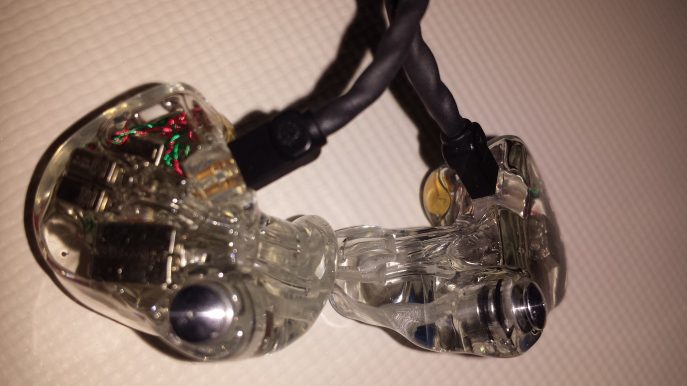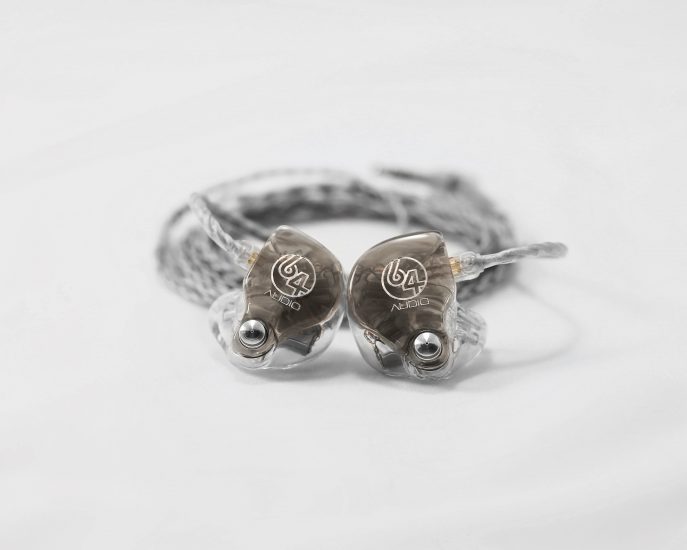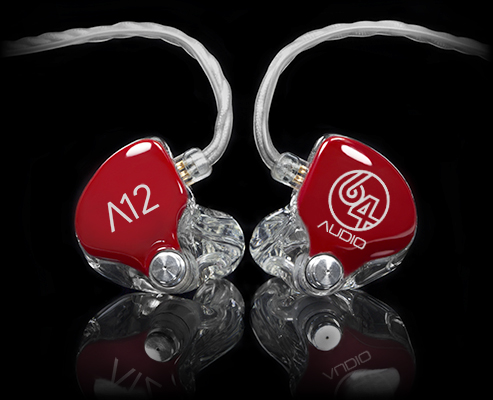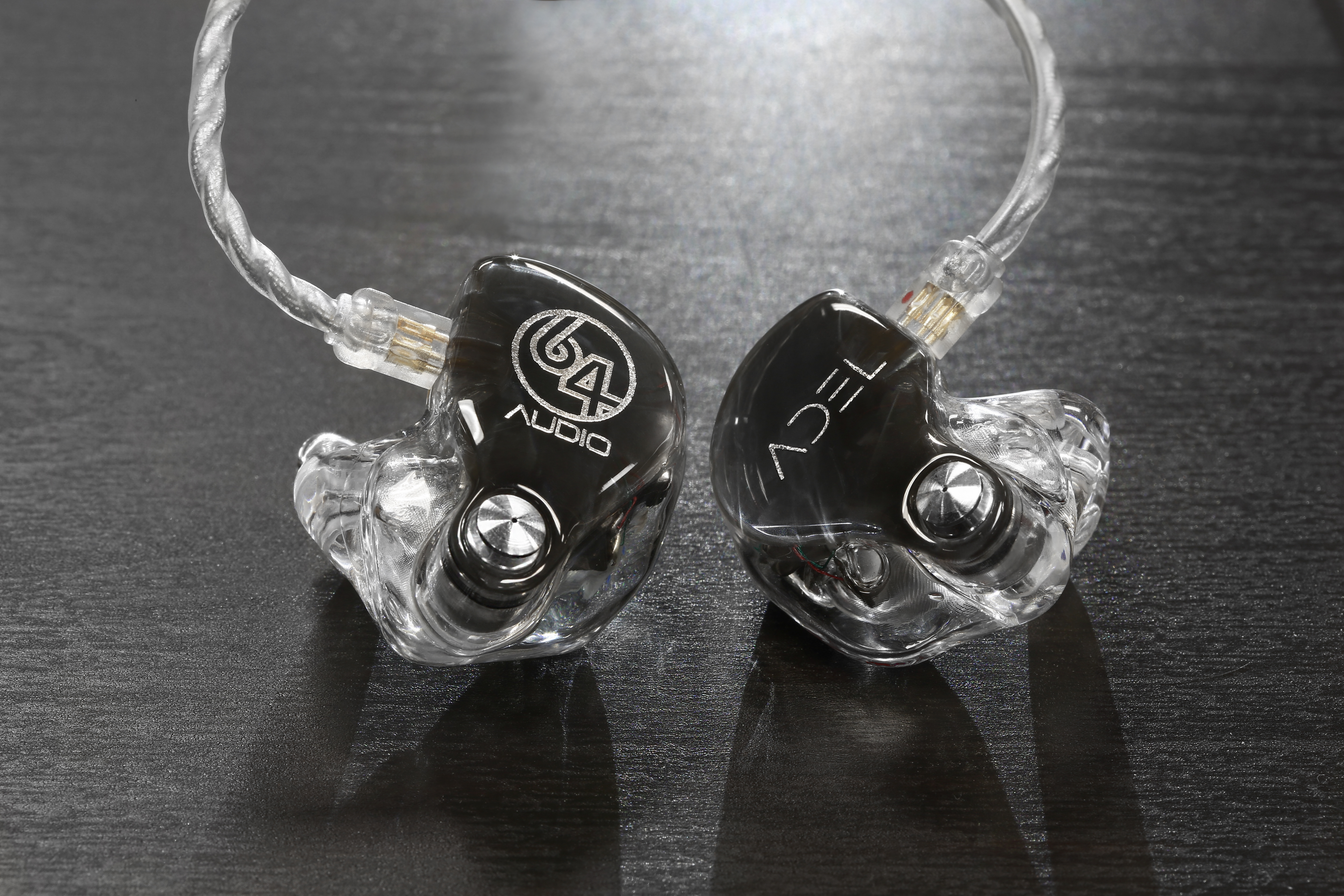Back in 1964 when most 12 year old boys were out playing baseball and listening to the Yankee games on radio, a time when Mickey Mantle was king, a young and brilliant young Stephen Ambrose was tinkering and modifying a swimmers ear plugs with tiny speakers and clay. At the age of 13 Steve designed the worlds first fully sealed ear can with a clay and putty in-ear monitor. Stephen’s in-ear monitors designs took him on a journey and led to to a career touring with superstar musicians that included Stevie Wonder, Diana Ross and Kiss to name a few. The designs he created were meant to help musicians while performing in live concerts and studios.
Years later Stephen realized that the major problem with people that were using Sony Walkman’s with ear buds and IEM’s were actually contributing to hearing loss. Documented studies are showing that listening devices are contributing to a whopping 77% increase in hearing loss. Stephen told me in Denver while attending the Rocky Mountain Audiofest he felt that something needed to be done to help music lovers protect not only their hearing, but the hearing of the generations to come. Stephen studies with Vanderbilt University and a leading audiologist led to grants from the National Science Foundations and National Institute of Health to study the hearing loss problems. The research led to the development of the Ambrose Diaphonic Ear Lens (ADEL). The ADEL is designed to absorb the harmful pressures in your ear by creating a second eardrum, which prevents the pressure from reaching the nerve that causes the damage to one’s hearing. There are studies and documented papers on Asisus Technologies website https://asiustechnologies.com/ which go into the research by Vanderbilt and leading audiologist research that support what Stephen design is actually doing in theory and application.
2014 brought the team of Asisus and 1964 Ears together to design and manufacturer the in-ear monitors with the ADEL technology. Vitaliy Belonozko a dedicated sound engineer who was working with both musicians and production companies for over a decade was a good match for Stephen Ambrose. The newly company formed company 64 Audio was born. The products are all designed and manufactured in Vancouver, Washington.
Adel A12 Design
The Adel 12 custom in ear monitor is a 12 driver per side designed in-ear monitor. The product is uniquely designed and assembled meticulously by hand. The Adel Auto module contains a membrane that Steve likes to describe as a secondary eardrum. The main function of ADEL is to absorb the pneumatic pressure in the ear canal making it act like a barrier to protect your hearing and gives the listener a more spacious and richer musical soundstage,. There are two modules offered with one that is adjustable by the user who can custom tune the sound and soundstage. The adjustable model was easy for me to make adjustments with the bass and soundstage. Turning the module counterclockwise and all the way down and then tuning clockwise I was able to get a better bass definition and a slightly wider soundstage. The other module is fixed and both are user replaceable.
Vitaliy prefers using 3D Fit technology. The product development team at 64 audio made extensive modifications to existing 3D software and developed a proprietary 3D process. The 3D process ensures that the fit of your monitors will be precise and comfortable in your ears and also will give the listener a good seal which is important for getting the music to flow evenly in your ear. The Adel 12 is custom made using the 3D software to design the moulds. The 12 drivers are enclosed in the casing with twelve precision balanced armature drivers with 4 driver covering the low frequency , 4 covering the midrange and 4 for the high frequency. The design uses a 3-way passive crossover and is encased in a hard acrylic shell. The set includes a 2 pin cable. The price for the A12 is $1999 and usually takes 3 weeks to build. Skilled technicians do all the labor-intensive process by hand. They offer excellent noise cancelling and isolation properties. The A12 works well with all portable listening devices and desktop amplifiers.

Listening Impressions
The A12 arrived in a nice portable case and was neatly packed inside a nice carrying case. The case had my name engraved on the front making it more personal. Cuing up “Sara” from Fleetwood Mac’s Greatest Hits the sound out of the box was warm and musical. The sound of the A12 was not bright and had good tone and sounded musical. After to listening for the first couple of hours I was very impressed with the A12. The sound of instruments had good definition and detail. During the early listening sessions never did I feel that the A12 was bright or overly analytical and detail was all presented musically. The AK 240 uses twin Crystal DAC’s and is a top tier musical play and also will reveal everything that is fed through it. Loaded with 400 albums and over 5000 songs from every genre I was able to feed the A12 a high dose of every genre. The months I have been listening to the A12 have been very rewarding. I have spent lot of hours enjoying different music while running the A12 through the gamut.
Listening to Art Pepper’s “Meets the Rhythm Section” was a treat to listen too. Miles Davis at the time of this recording was touring the West Coast and his rhythm section is featured on this excellent recording from 1957. Pepper was summoned to the studio for this recording and never met the musicians he was going to record with. Pepper was having personal issues at the time with drugs and his saxophone was in need of repair. He admired the musicians greatly but had not played his instrument in a long time. He was nervous during the session yet one of the greatest ever jazz records came to fruition. Listening to the track “Imagination” with Pepper in the left channel, the tonality if his instrument sounded perfect. The delicate sound of his saxophone was incredibly transparent with exceptional musicality. I could hear Philly Joe Jones drum cymbals in the rear with clarity and detail. Red Garland piano sounded realistic and had excellent tone.

“Waltz Me Blues” revealed a tight bass kick drum and the cymbals were shimmering and Jones’s brush strokes had excellent detail and you could hear the delicate brush hitting the cymbals with pinpoint imaging. The bass was tight and controlled with excellent definition of the instrument. Imaging on the A12 was excellent and I could visualize each musician in their own defined space. The sound of Pepper sax once again was special. The rhythm section and Pepper played as if they were playing together for years. If Peppers’ sax were in need of repair you would never know it from the exceptional sound of this magical recording.
Violin recordings can be challenging for many in-ear monitors to get right. The A12 was exceptionally good. Julia Fischer’s excellent DSD recording on the Pentatone label is well done. Julia is masterful playing the “Allegro Moderato” from Tchaikovsky OP35. It was played with conviction and the sound coming from the A12 absolutely nailed the sound of her violin plus the wood tone of the instrument was clear and transparent and well defined. Closing my eyes she was there in front of me and the music came to life. I could hear her violin and it never sounded harsh, nor edgy. Musical and masterful are terms that come to my mind while listening to her play. The A12 nailed the tonality of the instrument, the music came to life and her playing was vivid and realistic with sound that had no coloration. The music flowed and sounded incredibly good.
Jane Monheit vocal on ‘Bill’ from her “Taking a Chance on Love “album was sultry and seductive. The beautiful melodic tone of her vocal was reproduced with a lush sound that was captivating. Her vocals were clear and vibrant I could hear every syllable of the lyric and Jane’s magical voice. The rendition of the song and sound of the piano sounded accurate and vivid. Once again the musicality kept me completely focused on the the performance and the A12 just got out of the way and all I was left with was Jane’s performance and her seductive voice.
Summing it all up:
The A12 has a total of twenty-four miniature drives arranged in two in-ear monitors. The complex three way crossovers and tiny drivers are extremely challenging for any designer to make it all come together. The sound has to be balanced and also work with the other drivers. The challenge for Vitaliy was to get the drivers to work in a musical and balanced configuration and not sound as it they were playing separately.. He wanted the drivers to work in perfect harmony. The sound had to be musical but it all had to work in unison.The luscious sound coming from all genres of music was synergistic with the A12. Never did I feel that there was any lack of integration with the drivers. The bass was tight, controlled and has exceptional inner detail. Violins were never harsh and always sounded realistic and the shimmer of cymbals and other upper frequency instruments always revealed exceptional clarity and definition. The highs were extended but never dull and always musical.
The midrange was exceptional. Listening to both female and male vocals was outstanding. The sound of instruments and musicality while listening to the great jazz recordings showed me just how good the A12 was in reproducing music. The stellar sound was vivid and always enjoyable. The A12 strength was tonality. Instruments sound realistic and vocals were clear and defined. Soundstage in comparison to the more expensive JH Audio Layla was not as wide or deep; The Layla had the more expansive soundstage with better air and separation between performers. The Layla is priced $600 higher, so you would expect better performance from the higher priced product. The A12 still performed exceptionally well in all other areas in comparison to the Layla, The signatures are different with the Layla less warm with slightly more transparency. The A12 performed admirably against the more expensive Layla.
When I met Steve in Denver and he showed me the active technology; I was amazed. The test he did on using the injected air to inflate tiny balloons to create the second eardrum shockingly stunned me. The sound of both ears seemed to be balanced and it was if I was hearing equally in both ears. The difference was noticeable immediately and the volume of my AK240’s volume control dropped to less than 40 and was still loud. The 100 steps of the AK240 I had previously been listening to at 60 was now much lower and volume was as good at the lower levels. I also felt no pressure from the music entering my eardrums while using the active technology. The sound was always balanced in both ears.
The A12 passive technology without the balloon never equaled the active technology I heard in Denver. The A12 still played at a lower levels than the other IEM’s at my disposal, but never did I experience the same jaw dropping experience I did as in the first time I heard them in Denver. I still admire the work that Steve Ambrose is doing and it is important. The passive technology did relieve pressure to my ears in listening sessions. I was able to feel no pressure and listen at lower levels and the A12 never failed to deliver the musicality and tonality that I crave in listening sessions.

The tonality of the instruments and musicality is what makes the A12 special. The product never failed to keep me engaged with the music. I always felt connected to the music. Whether I was listening on long flights for extended period of time or at home in my listening room, the A12 delivered exceptional performance. The work Vitaliy did with the drivers and crossover is remarkable. The result is a musical and transparent product that was able to satisfy me during long listening sessions.
Hearing Loss from headphones is a serious issue worldwide. The headphone and portable device explosion has more people than ever before using headphones with phones and digital players. The risk of hearing loss is increasing and we need to be aware of the risk associated with playing music too loud. The ADEL technology according to the studies done from the Asius white papers has addressed some of the issues we are facing and are being designed to help prevent hearing loss. More studies are still being done and Stephen Ambrose’s goal is to help fix the problem of hearing loss and is actively pursuing his dream of making musical devices that will let music lovers enjoy music safely.The A12 is top tier in-ear monitor that sounds exceptional and is recommended for that music lover who wants balanced sound with exceptional musicality. The active ADEL technology is being worked on and will be another welcome design when it is released. The A12 never disappointed in my listening sessions and if you love tonality and musicality the A12 should be on your short list to audition.















Want to join discussion?
Feel free to contribute!